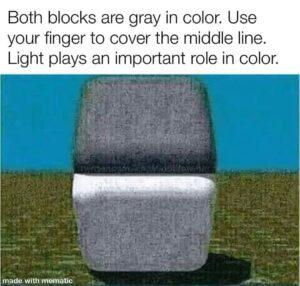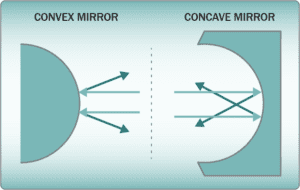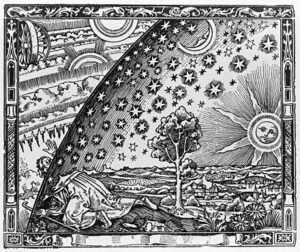Our brains create the images we see. We know this intellectually, but we have not yet fully absorbed its implications.

Donald Hoffman likens what we see to a desktop interface. The email file appears as a blue square in the lower right corner of my screen. In truth, the email is neither blue nor square. I am seeing an icon, a representation.
Perhaps we are seeing the same 2D plane in different ways. When we are beneath it, it curves above us. When we are above it, it curves beneath us.

“[O]ur observable universe is at the threshold of expanding faster than the speed of light.” ―physicist Lawrence M. Krauss
When the expansion of the universe eclipses the speed of light, do we go “over the rainbow”?
The following is from the Wikipedia entry for firmament. It’s called the Flammarion engraving.

“The Flammarion engraving is a wood engraving by an unknown artist that first appeared in Camille Flammarion’s L’atmosphère: météorologie populaire (1888). The image depicts a man crawling under the edge of the sky, depicted as if it were a solid hemisphere, to look at the mysterious Empyrean beyond. The caption underneath the engraving (not shown here) translates to “A medieval missionary tells that he has found the point where heaven and Earth meet…”
This is why I have called this site Welcome to Heaven.